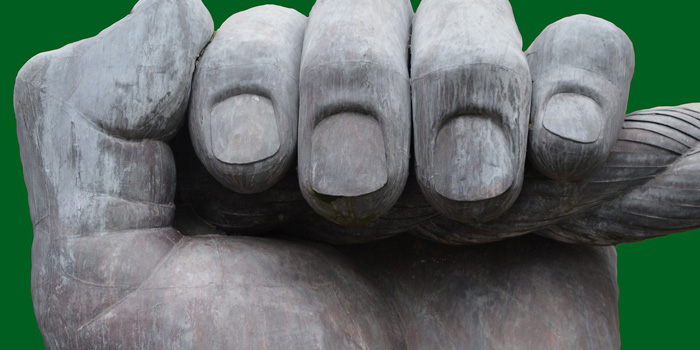Fingernails are not just decoration or tools for picking splinters. They can also reveal a lot about an individual’s health, especially as he or she gets older. Changes in the color, shape, texture, or growth of nails can indicate various medical conditions, some of which may be serious.
Yellow Nails
If your nails turn yellow, it could be a sign of a fungal infection, which is more common in older adults. Fungal infections can make your nails thick, brittle, and discolored. They can also cause pain and inflammation around the nail bed. To treat a fungal infection, you may need to take antifungal medication, either orally or topically. You may also need to trim or have the affected nails removed.
However, yellow nails can also be caused by other factors, such as smoking or the use of nail polish. In rare cases, yellow nails may indicate a more serious condition. If your nails are yellow and you have other symptoms, such as shortness of breath, fatigue, or weight loss, you should see your doctor as soon as possible.
Some possible conditions that accompany yellow nails include:
- Respiratory conditions
- Lymphatic system blockage which also causes swelling (lymphedema)
- Reduced liver function (jaundice)
- Fungal infection
- Diabetes
Spoon Nails
Spoon nails are nails that are curved inward, like a spoon. They may look flat, thin, or concave. Spoon nails are often a sign of iron deficiency anemia, a condition where your body does not have enough red blood cells to carry oxygen to your tissues. Iron deficiency anemia can cause weakness, dizziness, pale skin, or cold hands and feet. To treat iron deficiency anemia, you may need to take iron supplements or eat more iron-rich foods, such as meat, eggs, spinach, and beans. Too much iron can create problems, too.
Some possible conditions that accompany spoon nails include:
- Anemia from Iron-deficiency
- Excess Iron (Haemochromatosis)
- Plummer-Vinson syndrome (PVS)
- Raynaud’s syndrome
- Systemic Lupus
- Rheumatic Fever
Nail Separation
When a fingernail or toenail lifts away from the pink nail bed it is called onycholysis. It presents as areas of the nail tending to be abnormally opaque in color and the surface of the nail can be pitted or indented. The condition is usually painless, but the affected nails may be prone to snagging on things. Because of this, it’s important to trim affected nails carefully. Once the underlying cause is identified and treated, onycholysis will typically resolve itself in several months as the old nail grows out and is replaced.
Some possible conditions that accompany nail separation include:
- Trauma to the nail
- Infection
- Thyroid disease
- Poor circulation
- Raynaud’s syndrome
- Drug reactions
- Psoriasis
- Connective tissue disorders (e.g. lupus)
- Allergic reactions to nail products
Clubbed Nails
Clubbed nails are nails that are enlarged and rounded at the tips. They may look like drumsticks or bulbs. Clubbed nails are usually a sign of low oxygen levels in your blood, which can be caused by various lung diseases, such as chronic bronchitis, asthma, or lung cancer. Lung diseases can make it hard for you to breathe and get enough oxygen to your organs and tissues. To treat lung diseases, you may need to take medication, use oxygen therapy, or undergo surgery.
Clubbed nails can also be caused by other conditions that affect your heart, liver, or digestive system. These conditions can interfere with your blood flow and nutrient absorption. If you have clubbed nails and other symptoms, such as coughing, wheezing, abdominal pain, or jaundice, you should consult your doctor.
Some possible conditions that accompany clubbed nails include:
- Low blood oxygen levels
- Inflammatory bowel disease (Crohn’s disease, ulcerative colitis, etc.)
- Lung disease (cancer, bronchiectasis, cystic fibrosis, abscess, etc.)
- Cardiovascular disease
- Liver disease
- Celiac disease
- Graves’ disease
- Endocarditis
Brittle Nails
Brittle nails are nails that are dry, cracked, or split easily. They may also peel or chip off. Brittle nails are often a result of aging, as your nails lose moisture and natural oils over time. To prevent or treat brittle nails, you should moisturize your nails and cuticles regularly, wear gloves when doing household chores, and avoid harsh chemicals and nail products .
However, brittle nails can also be caused by other factors. These factors can affect your nail growth and strength. If you have brittle nails and other symptoms, such as hair loss, weight gain, or cold intolerance, you may need to take supplements, hormone therapy, or thyroid medication.
Some possible conditions that accompany clubbed nails include:
- nutritional deficiencies
- hormonal changes
- thyroid problems
Opaque Nails
If a nail has not detached from the bed but appear mostly white with reddened or dark bands at the tip it may be caused by a fungal infection. If all the nails are affected, this could be a condition known as “Terry’s nails,” resulting from decreased blood supply and increased connective tissue in the nail bed. In the case of Terry’s nails, the light, crescent-moon shaped area of the nail bed (known as the lunula) is not usually present.
Some possible conditions that accompany opaque nails include:
- Malnutrition
- Congestive heart failure
- Diabetes
- Liver disease
- Kidney failure
- Overactive thyroid (hyperthyroidism)
- Iron-deficiency anemia
Your fingernails can tell you a lot about your health, especially as you get older. If you notice any changes in your nails, such as color, shape, texture, or growth, you should pay attention and see your doctor if needed. By taking care of your nails, you can also take care of your overall health and well-being.

